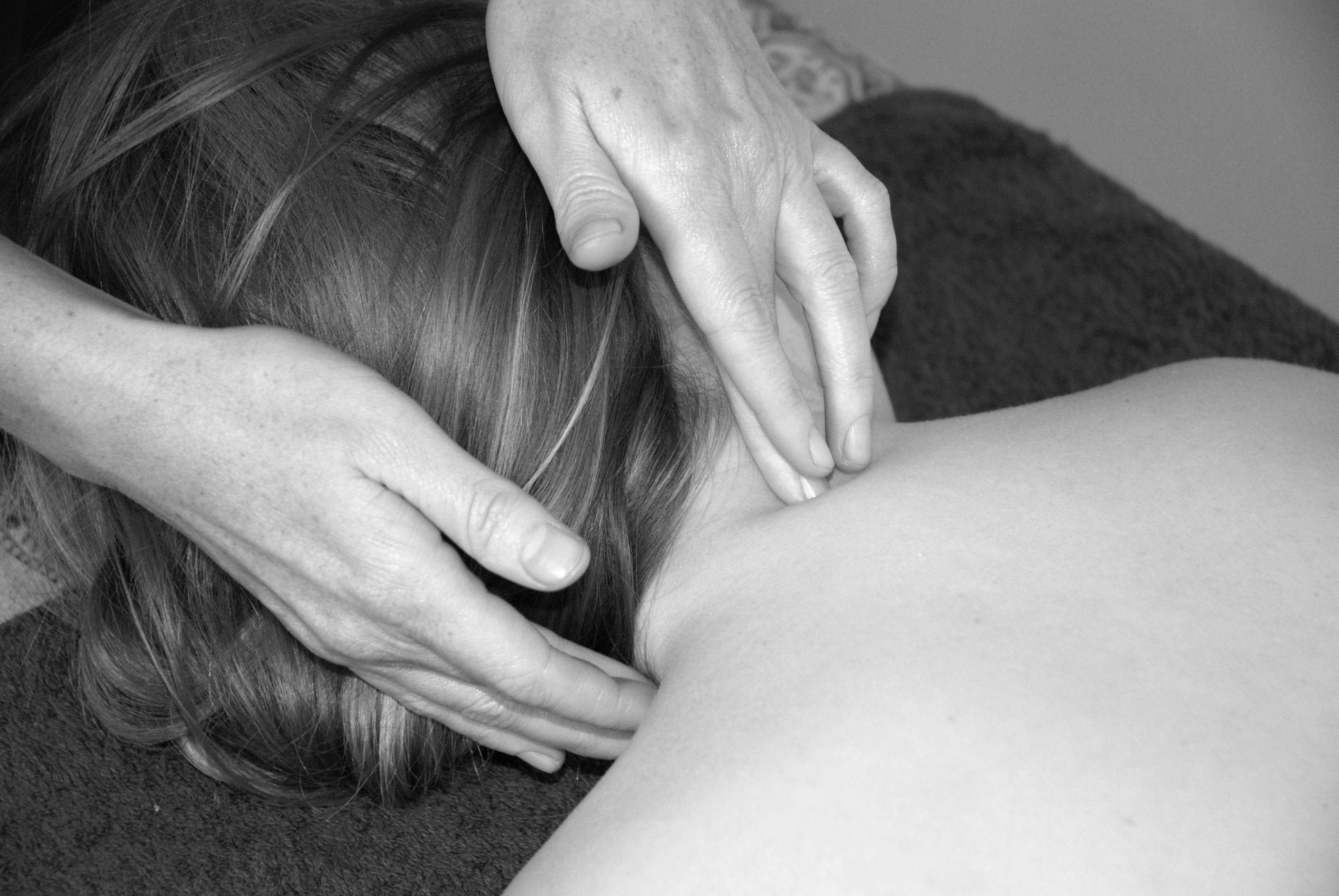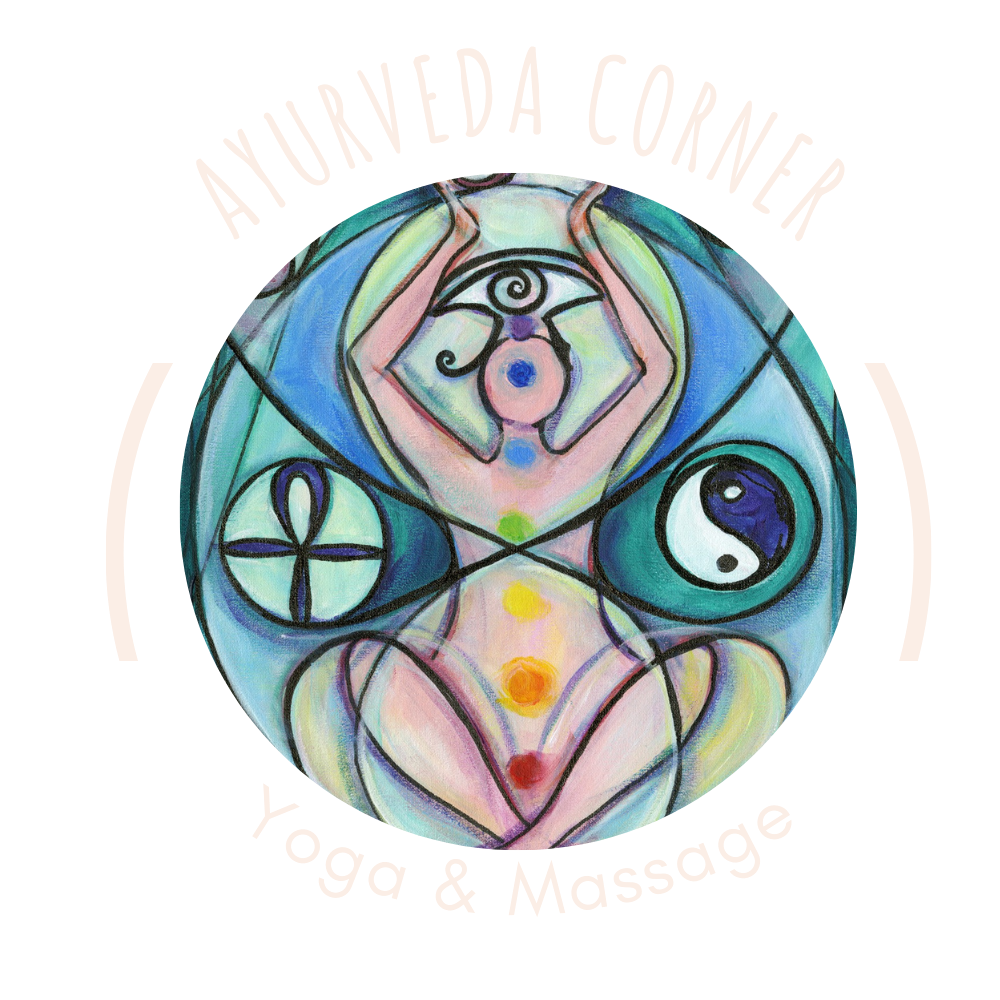
Ayurvedic Massage
What is Ayurveda?
Ayurveda is an ancient science, grounded in the Vedic scriptures, dating back to 3000 BC. It literally means “life knowledge” and is considered to be yoga’s sister science.
Ayurveda teaches us that we are all made up of the same dynamic elements that compose the universe: Air, Water, Ether, Earth and Fire. These elements are divided into three fundamental concepts or doshas:
1. Vata (air + ether)
2. Pitta (fire + water)
3. Kapha (earth + water)
At conception our unique Prakruti, or “first creation” is determined. This is our unchanging constitution usually composed of one predominant dosha, and a secondary dosha (e.g. Pitta-Kapha). Very rarely, an individual will be born with an evenly proportioned Vata-Pitta-Kapha balance.
Throughout life there is a constant, and often turbulent, interaction between our internal nature and our external environment creating a fluctuation, or imbalance, to our doshic composition, otherwise known as Vikruti.
The tri-dosha governs the creation, maintenance and destruction of bodily tissues and the elimination of waste products. It is also responsible for psychological phenomena, including such emotions as fear, anger and greed; and for the highest order of human emotions such as understanding, compassion and love.
When an individual is able to maintain a state that is as close to their natural constitution as possible, it is believed that they will be living to their highest potential, in terms of health and overall happiness. When imbalances occur and are sustained for prolonged periods of time they become susceptible to illnesses and disease.
Ayurveda is a system of self-healing, which stems from self-knowledge. A fundamental step to achieving one's potential is to understand their natural constitution, their current imbalances, and then to work with love and care towards balance.

“The state of ill health is a moment to
moment happening. Healing is moment
to moment balance, bringing awareness
to our thoughts, feelings and emotions and
how we respond.”
— Dr Vasant Lad
What makes an Ayurvedic Massage Unique?
Dosha Constitution. An Ayurvedic Massage begins with a short consultation in which questions will be asked about lifestyle, diet and health etc, in which the client's Vikruti (doshic imbalance) will be determined.
Oils. Base and therapeutic oils will be selected according to the client's particular needs. These oils will be the most beneficial in bringing your doshic constitution back into balance.
Marma Points. During the massage, pressure is placed on specific marma (vital) points located throughout the body. This acts to balance the three body humours - Vata, Pitta, Kapha.

Some examples of how doshic imbalances
can manifest in the mind and body
What is a marma point?
Harish Johari, in Ayurvedic Massage (1996), defines the marmas as follows:
According to the Sushruta Samhita, there are 107 marmas in the human body. Marmas refer to the firm junctures or meeting points of the five organic principles: mansa (muscles), sira (vessels), snayu (ligaments), asthi (bones), and sandhi (joints). These junctures form the seats of the vital life force or prana. At these junctures, the four classes of sira - nerves, arteries, veins and lymph - enter the organism to carry nutrients and moisture. These vessels carry vayu; blood, and pitta and kapha when they are dominant; and kapha respectively.
By working with the marmas during massage, toxins can be released, thereby helping to achieve an electrochemical balance, or a balance of the three doshas (Vata, Pitta, Kapha) in the body.
What are the benefits of Ayurvedic Massage?
Removes old age (Jarahar)
Removes fatigue (Shram Har)
Removes excess wind (Vata Har)
Improves eyesight (Dristhi Prasad Kar)
Strengthens the body (Pusthi Kar)
Increases longevity (Ayus Kar)
Induces sleep and dreams (Swapna Kar)
Strengthens the skin (Twak Dridh Kar)
Aids resistance to disharmony and disease (Klesh Sahattwa)
Soothes ailments caused by wind and mucus (Vata-Kapha Nirodhak)
Improves the texture of the skin (Mrija Varn Bal Prad)
90 Minute Massage
£77
a brief consultation, in which your Vikruti (current doshic imbalance) will be determined
full-body massage using warm Ayurvedic oils, pressure on specific marma points located throughout the body and chakra-balancing techniques
head massage
60 Minute Massage
£55
a brief consultation, in which your Vikruti (current doshic imbalance) will be determined
upper-body massage using warm Ayurvedic oils, pressure on specific marma points located throughout the body and chakra-balancing techniques.

"I'm 70 now, and a regular Ayurvedic massage with Laura is an important ingredient in my plans to stay healthy and fit into really old age. Of course this massage is great for easing any muscle tension, but it's also wonderful for balancing energies, and deeply nurturing, giving a sense of profound well-being. I feel Laura truly works with the whole person that i am, she brings great warmth and an amazing power of insight to her work, and her yoga tips for physical problems are invaluable too."
— Radha



